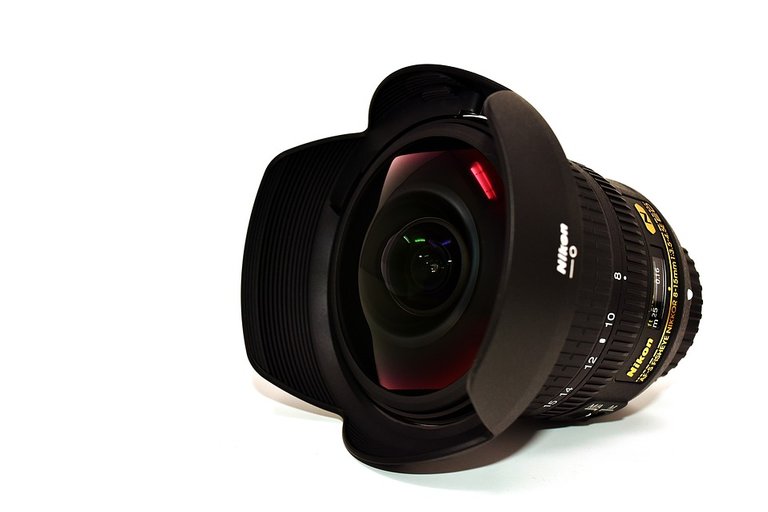[Photoequipment] Die Objektive - The lenses (DE/EN)
Hallo zusammen,
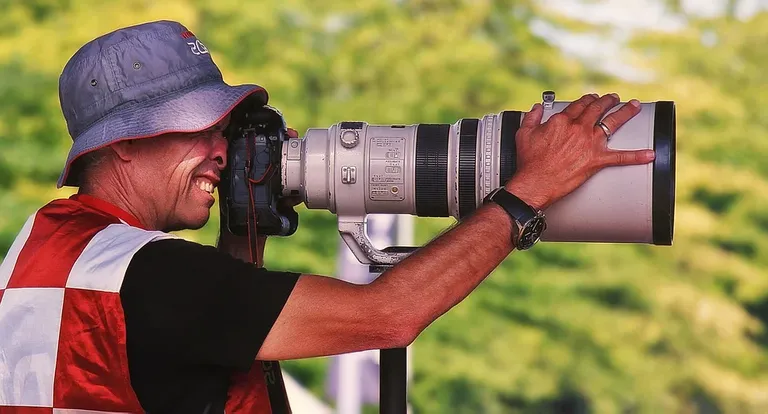
pixabay.com
heute möchte ich euch erklären welche Unterschiede es gibt bei den Objektiven und wo man sie einsetzen kann. Hierbei werde ich euch auch sagen, was wir nutzen. Mir ist bewusst, dass es nicht jeden interessiert und ich auch für die immense Arbeit kaum Stimmen erhalten werde.
Today I would like to explain to you what differences there are in the lenses and where you can use them. I will also tell you what we use. I am aware that not everyone is interested and I will hardly receive votes for the immense work.
Fischaugenobjektive / Fisheye lenses
Fischaugenobjektive haben für das Kleinbildformat eine Brennweite von etwa 16 mm und darunter. Diese liegen damit im Bereich starker Weitwinkelobjektive und sind leicht zu erkennen, da sie eine vorne eine Glaskuppel haben. Bei den Vollformat Kamera sieht es durch den Cropfaktor sieht es etwas anders aus hier liegt die Brennweite bei 4 - 15 mm je nach Hersteller. Diese Objektive können ein Blickwinkel von 210° erreichen. Zum Vergleich hat ein menschliches Auge, einen Blickwinkel ca. 150°(Einschränkung der Sicht).
Fisheye lenses have a focal length of about 16 mm and below for 35 mm format. These are therefore in the range of strong wide-angle lenses and are easy to recognize because they have a glass dome in the front. With the full format camera it looks by the Cropfaktor somewhat differently here the focal length lies with 4 - 15 mm depending upon manufacturer. These lenses can reach an angle of view of 210°. For comparison, a human eye has a viewing angle of about 150 ° (restriction of vision).
Abbildung des Bildes / Image illustration
Man kann sich das Bild vorstellen, als ob man durch eine große Glaskugel schaut. Es ist tonnenförmiger verzerrt und muss mit einem Programm bearbeitet werden.
You can think of the image as looking through a large glass sphere. It is barrel distorted and needs to be edited with a program.
Einsatzgebiet / Application area
Panoramaaufnahmen von Landschaften / Panorama shots of landscapes
Unsere Objektive / Our lenses
Keine / none
Ultraweitwinkel - Weitwinkel / Ultra Wide Angle - Wide Angle
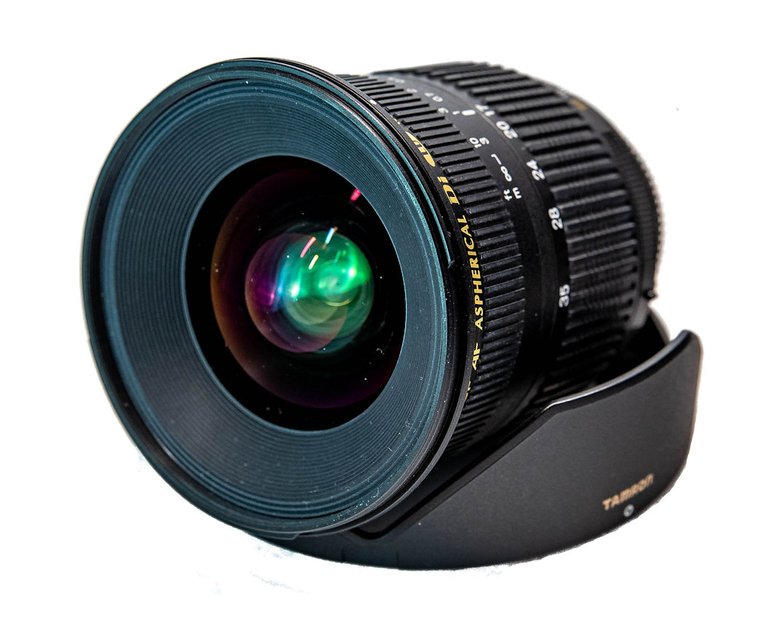
TAMRON 17 - 35 f/2.8 - 4 DI OSD
Als Weitwinkelobjektive (Ultra Weitwinkel) werden alle Objektive mit einer sehr kurzen Brennweite bezeichnet. Darunter fallen alle Objektive, die eine ungefähren Brennweite von ca. 12 mm bis ungefähr 35 mm haben. Der Bildwinkel beträgt bei 12 mm 122° und ein 35 mm hat dann ein Bildwinkel von 63°. Es gibt auch Objektive, die sind einerseits ein Weitwinkel Objektiv sowohl auch ein Zoom Objektiv.
Wide-angle lenses (ultra wide-angle) are all lenses with a very short focal length. This includes all lenses that have an approximate focal length of about 12 mm to about 35 mm. The angle of view for 12 mm is 122° and a 35 mm then has an angle of view of 63°. There are also lenses that are both a wide-angle lens and a zoom lens.
Abbildung des Bildes / Image illustration
Je nach Brennweite können teilweise ein Fischaugeneffekt auftreten. Diese können mit einem Programm ganz leicht behoben werden.
Depending on the focal length, a fisheye effect can sometimes occur. These can be easily corrected with a program.
Einsatzgebiet / Application area
Architekturfotografie, Landschaftsfotografie, Portraitfotografie, künstlerischen Fotografie
architectural photography, landscape photography, portrait photography, artistic photography
Unsere Objektive / Our lenses
TAMRON 17 - 35 f/2.8 - 4 DI OSD (FX)
AF-P DX NIKKOR 18–55 mm 1:3,5–5.6G VR (DX)
TAMRON SP 24 - 70 mm f/2.8 USD DI VC (FX)
TAMRON 18-200 mm f1:3,5–6.3 Di II VC (DX)
Festbrennweite / Fixed focal length
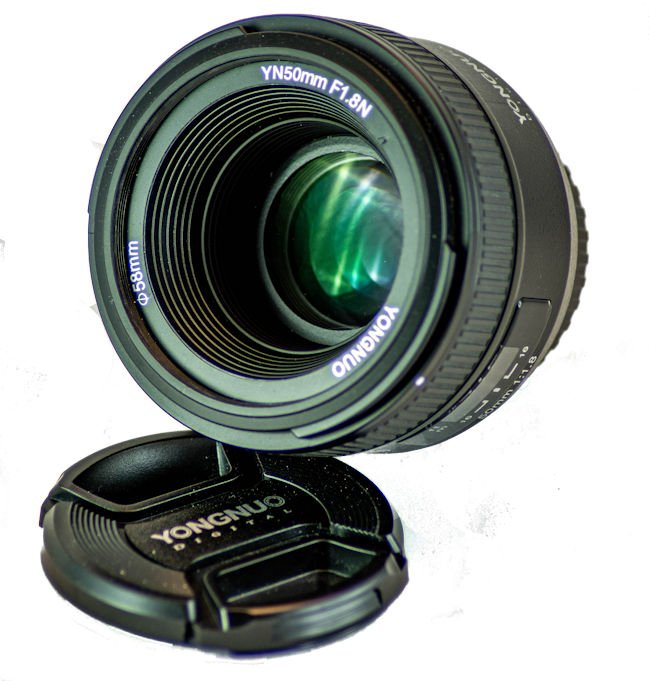
Yongnuo 50 mm f1:1.8
Diese Objektive haben nur eine Brennweite z. B. 10 mm, 35 mm, 50 mm, 85 mm und so weiter. In der Regel sind diese Objektive sehr lichtstark und können sehr offenblendig fotografieren. Somit haben sie auch eine geringe Schärfentiefe, dieser Effekt wird zum Freistellen vom Hintergrund genutzt. Der Zoom ist der Fotograf selbst.
These lenses have only one focal length e.g. 10 mm, 35 mm, 50 mm, 85 mm and so on. Usually these lenses are very fast and can shoot very open aperture. Thus, they also have a shallow depth of field, this effect is used to crop from the background. The zoom is the photographer himself.
Abbildung des Bildes / Image illustration
Je nach Brennweite können stellenweise ein Fischaugeneffekt auftreten. Diese können mit einem Programm ganz leicht behoben werden.
Da das Motiv vom Hintergrund freigestellt wird, nennt man die Unschärfe auch Bokeh.
Depending on the focal length, a fisheye effect can occur in places. This can be easily corrected with a program.
Since the subject is blurred from the background, the blur is also called bokeh.
Einsatzgebiet / Application area
Das Einsatzfeld ist sehr breit gefächert wie z. B. Landschaften, Architektur, Portraits von Menschen oder Tieren
The field of application is very broad such as landscapes, architecture, portraits of people or animals
Unsere Objektive / Our lenses
AF-S DX Micro-Nikkor 40 mm F/2.8 (DX)
Yongnuo 50 mm f1:1.8 (FX)
Makro / Macro
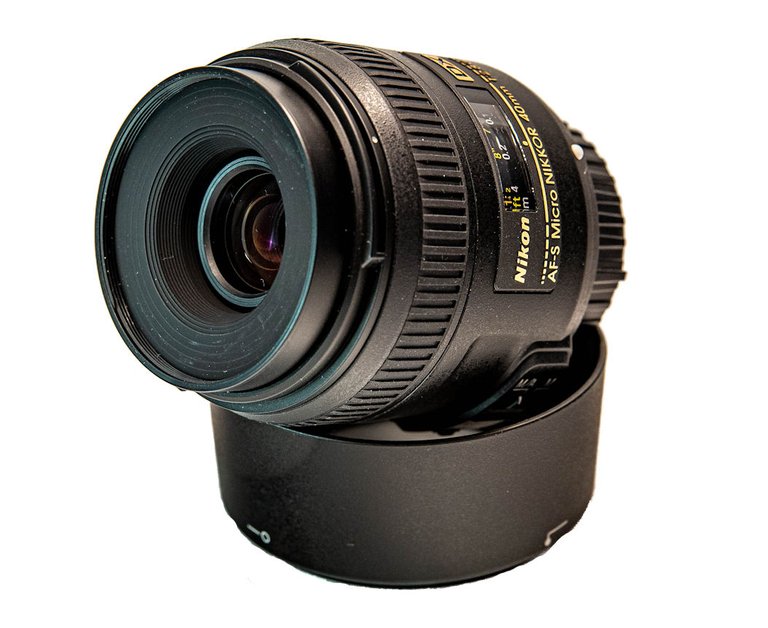
AF-S DX Micro-Nikkor 40 mm F/2.8
Ein Makro Objektiv ermöglicht, einen großen Abbildungsmaßstab, einfach gesagt macht er kleine Ding groß. Hierbei gibt es auch Unterschiede in den Brennweiten und den Mindestabstand zum Objekt.
A macro lens allows a large magnification, simply put it makes small thing big. There are also differences in the focal lengths and the minimum distance to the object.
Abbildung des Bildes / Image illustration
Die im Makro- und Mikrobereich geringe Schärfentiefe legt zunächst eine offene Blende nahe. Um ein durchgängiges scharfes Bild zur erhalten kann man eine Technik nutzte, namens „Focus stacking“. Hier werden viel Bilder gemacht, wo das Objekt von vor bis durch verschieden Fokuspunkte fotografiert wird und die Bilder werden im Programm aufeinander gelegt. So entsteht zum Beispiel eine Fliege mit seinen Haaren durchgängig scharf.
The shallow depth of field in the macro and micro range initially suggests an open aperture. To get a continuous sharp image you can use a technique called "focus stacking". Here a lot of pictures are taken where the object is photographed from in front of to through different focus points and the pictures are superimposed in the program. This way, for example, a fly with its hairs is consistently sharp.
Einsatzgebiet / Application area
Makrofotografie
Unsere Objektive / Our lenses
AF-S DX Micro-Nikkor 40 mm F/2.8 (DX)
TAMRON 70-300 mm f1:4–5.6 Tele-Makro (1:2)(FX)
Teleobjektiv
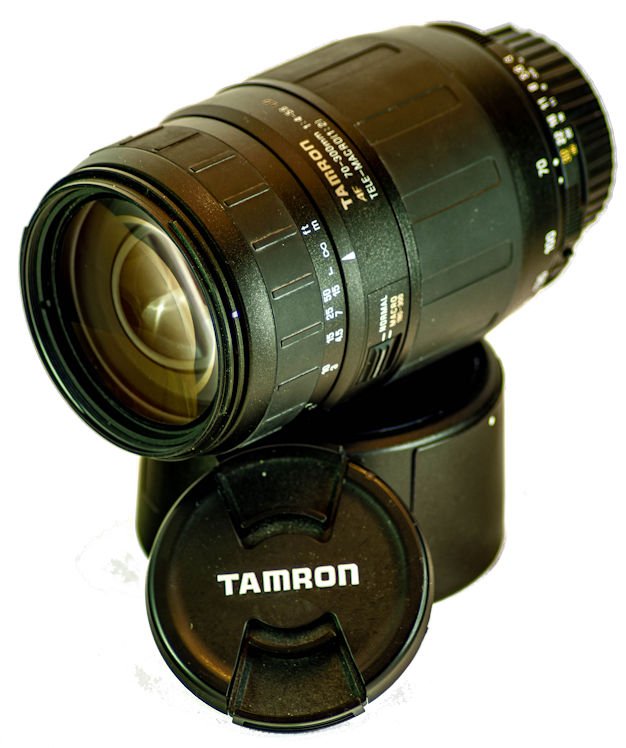
TAMRON 70-300 mm f1:4–5.6 Tele-Makro (1:2)
Ein Teleobjektiv ist nichts anderes wie ein Fernglas für eine Kamera. Wichtig ist hierbei die Brennweite. Hierbei kann so ein Teleobjektiv (Superteleobjektive) bis zu 1200 mm Brennweite haben. Der Nachteil ist, sie haben auch nur ein Blickwinkel von 2,1°. Es gibt noch Sonderbauten, die heißen "Spiegellinsenobjektive", die erreichen eine Brennweite von 2000 mm.
A telephoto lens is nothing more than a pair of binoculars for a camera. What is important here is the focal length. A telephoto lens (super telephoto lens) can have a focal length of up to 1200 mm. The disadvantage is, they also only have a viewing angle of 2.1°. There are special constructions called "mirror lenses", which reach a focal length of 2000 mm.
Abbildung des Bildes / Image illustration
Es gibt keine markante Verformung, die Programm ausgeglichen werden müssen.
There is no prominent deformation that need to be compensated program.
Einsatzgebiet / Application area
Sportfotografie, Naturfotografie, Tierfotografie
Sports photography, nature photography, wildlife photography
Unsere Objektive / Our lenses
TAMRON 70-300 mm f1:4–5.6 Tele-Makro (1:2)
TAMRON 18-200 mm f1:3,5–6.3 Di II VC
Somit habt ihr mal ein Überblick was es für verschieden Objektive es gibt und wie und wo man sie einsetzt. Das war's wieder von mir, ich wünsche euch einen schönen Abend, bis zum nächsten Mal.
So you have an overview of what different lenses there are and how and where to use them. That's it again from me, I wish you a nice evening, until next time.
Euer Hornet on Tour
Instagram: https://www.instagram.com/hornet_on_tour/
Twitter: https://twitter.com/OnHornet
Photo by Hornet on Tour (Michael der Knipser)
Translated with www.DeepL.com/Translator (free version)
